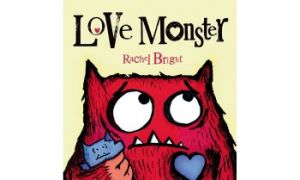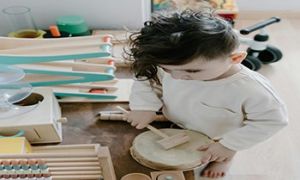

A: Under Regulations 101–102D, approved providers and educators must conduct risk assessments for activities that may pose risks to children’s health, safety, or well-being.
National Children’s Week (18th - 26th October) is more than a calendar event—it’s a call to action. A reminder to pause, reflect, and truly listen to the voices of children. In early childhood settings, where play, learning, and relationships intertwine, this week offers a powerful opportunity to centre children’s rights, celebrate their contributions, and elevate their lived experiences.
“Every time a child runs into my arms like I’m their whole world—that’s when I know I’m exactly where I’m meant to be.”
In early childhood education, empowered teams are the heartbeat of quality practice. When educators feel valued, heard, and supported, they don’t just comply—they co-create. Team empowerment isn’t a management strategy; it’s a relational commitment to emotional safety, shared purpose, and professional growth.
The concept of supervision zones is a practical strategy to enhance child safety and educator accountability where educators are assigned to actively supervise and engage with children.
A: As the end of the preschool year approaches, preschool educators begin preparing for graduation ceremonies—complete with miniature caps, choreographed performances, and proud photo ops. While these events can be joyful and affirming, they also invite deeper reflection. Is a formal graduation truly necessary in early childhood education? Or are there more developmentally appropriate, emotionally intelligent ways to honour children’s growth? This question opens space for reimagining what transition rituals could look like—and who they’re really for.
In a landmark move to enhance oversight and accountability across Australia’s early childhood education and care sector, Education Ministers have commissioned ACECQA to develop a New National Educator Register. This foundational digital system will provide regulators with clearer visibility of who is working in the sector and where—supporting safer, more transparent practices for children, families, and providers.
In child-related work, safety begins with trust and trust must be backed by verification. The NSW Office of the Children’s Guardian has issued a clear reminder: a Working With Children Check (WWCC) number alone is not enough. It could be expired, barred, or even fabricated. The only way to ensure a WWCC number is valid is through official online verification.
The following article provides information on why verification matters, how to do it, and what it means for your organisation’s safeguarding responsibilities.
Anxiety in young children often shows up in subtle ways ummy aches, restlessness, clinginess, or emotional outbursts. These feelings, sometimes described by children as having “the worries” or a “bubbly tummy,” can be overwhelming and difficult to articulate. As educators, we play a vital role in helping children recognise and regulate these emotions in safe, supportive ways.
The following article provides a simple, hands-on strategy that engages children’s attention, breathing, and body awareness—bringing calm and connection back into the moment.
Loose parts play is a powerful, open-ended approach that invites children to explore, create, and express themselves using everyday materials. It fosters autonomy, imagination, and problem-solving and can be tailored to your environment and the developmental needs of your children.
 As an Educator in Australia, your pay rate falls under the Children’s Services Award 2010. This award states the minimum amount that an employer can… Read More
As an Educator in Australia, your pay rate falls under the Children’s Services Award 2010. This award states the minimum amount that an employer can… Read More
 When working as a qualified Early Childhood Teacher (with a university degree) within a service, your rate of pay will come from the Educational Services… Read More
When working as a qualified Early Childhood Teacher (with a university degree) within a service, your rate of pay will come from the Educational Services… Read More
 When working as a Diploma Qualified Educator your pay rate is from the Children's Services Award 2010. This Award states your minimum rate of pay… Read More
When working as a Diploma Qualified Educator your pay rate is from the Children's Services Award 2010. This Award states your minimum rate of pay… Read More
 When working as a Cert 3 Qualified Educator, your pay rate is from the Children's Services Award 2010. This Award states your minimum rate of… Read More
When working as a Cert 3 Qualified Educator, your pay rate is from the Children's Services Award 2010. This Award states your minimum rate of… Read More
 Educational Leaders play a crucial role in their early childhood service by ensuring that the educational program aligns with best practices and supports the holistic… Read More
Educational Leaders play a crucial role in their early childhood service by ensuring that the educational program aligns with best practices and supports the holistic… Read More
 In early childhood education and care, ratios are more than a technicality—they are a frontline safeguard. Every child deserves responsive supervision, emotional connection, and developmental… Read More
In early childhood education and care, ratios are more than a technicality—they are a frontline safeguard. Every child deserves responsive supervision, emotional connection, and developmental… Read More
 Here’s a comprehensive Mobile Phone and Smart Watch Policy tailored for early childhood education and care (ECEC) services in Australia, aligned with the latest 2025… Read More
Here’s a comprehensive Mobile Phone and Smart Watch Policy tailored for early childhood education and care (ECEC) services in Australia, aligned with the latest 2025… Read More
 With the new national child safety reforms kicking in on 1 September 2025, early childhood services like yours have a real opportunity to lead the… Read More
With the new national child safety reforms kicking in on 1 September 2025, early childhood services like yours have a real opportunity to lead the… Read More
 The Sea of Fish Challenge is a national initiative that invites children, educators, families, and communities to create and display fish artworks as a symbol… Read More
The Sea of Fish Challenge is a national initiative that invites children, educators, families, and communities to create and display fish artworks as a symbol… Read More
 Across the early childhood education and care sector, educators are sounding the alarm: current staffing ratios are insufficient to deliver safe, meaningful, and developmentally appropriate… Read More
Across the early childhood education and care sector, educators are sounding the alarm: current staffing ratios are insufficient to deliver safe, meaningful, and developmentally appropriate… Read More

Love Monster is a sweet book about love, friendship, frustration, loneliness and being different. The monster lives...
See more...
Actively managing waste in an early learning service is essential for sustainability, cost efficiency, and environmental...
See more...
In early childhood education, the quality of a play space isn’t defined by how polished...
See more...© 2009-2025 Aussie Childcare Network Pty Ltd. All Rights Reserved.
